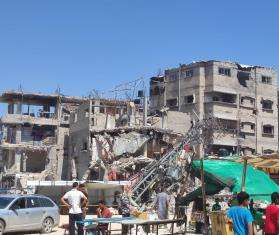In Niger, a meningitis mass-vaccination campaign launched by MSF, in cooperation with the local Ministry of Health (MoH), has ended. The aim was to prevent a large-scale epidemic after a number of cases had been reported in late March. More than 300,000 people were vaccinated in 20 days with positive results—the spread of the epidemic was stemmed.
Niger is located in the so-called “meningitis belt,” a broad area of Africa stretching from Senegal to Ethiopia that is recurrently affected by the disease. This year, after the first cases were reported by late March, the number of affected people rapidly increased, surpassing the epidemic threshold within weeks. In Madaoua district, where MSF focused most of its intervention, there were 275 cases declared, including 18 deaths. A team has been working in a nutrition project in the Madaoua area for years, and the existing MSF presence allowed for a swift response. As the alert was sounded, the decision was made to launch a mass vaccination to prevent the disease from spreading.
In the first phase of the intervention, MSF teams provided support to the MoH, which had started a vaccination campaign in the Birnin Koni district—the most affected area when the epidemic broke out, on the border with Nigeria. When support teams joined in, campaigns were launched in Madaoua district, and finally in the area of Bouza. “We started just in time,” says Marta Iscla, the emergency coordinator. “The campaign started at the right time to stem the epidemic.”
As many as 13 teams of vaccinators were required. Everyone between 2 and 30 years of age was vaccinated, sometimes in rural areas where access was difficult. In the end, 93 percent of the total at-risk population was immunized. While they vaccinated, the team also treated sick patients and trained local staff.
In addition to prevention activities, MSF was also involved in case management, distributing medicines and training local medical staff to identify and treat meningitis. The team also took part in epidemiological surveillance.



